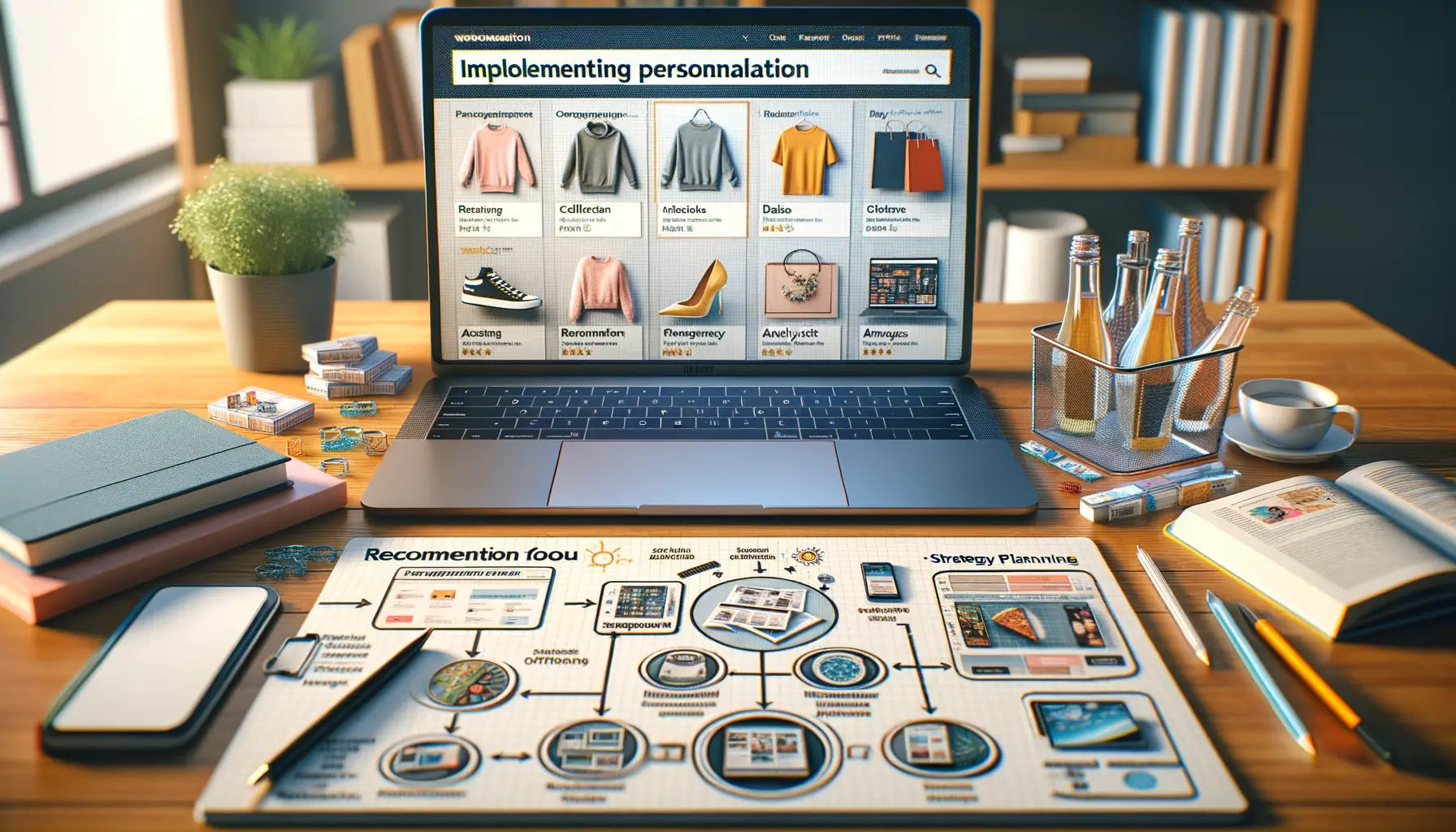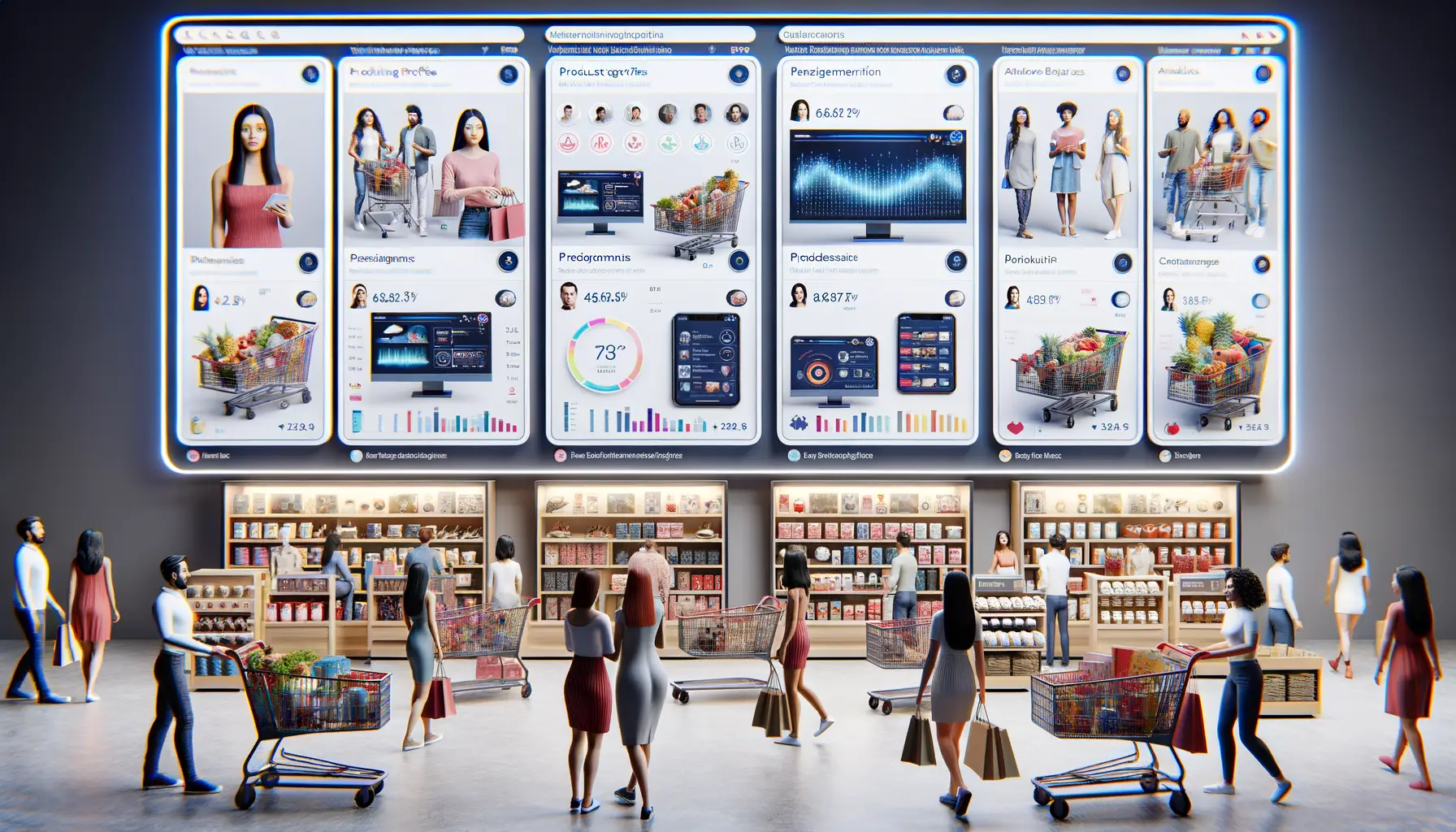Understanding the Importance of Personalization in E-commerce
Why Personalization Feels Like a Warm Handshake in E-commerce
Picture this: you walk into your favorite local shop, and the store owner greets you by name, remembers what you bought last time, and even suggests something tailored to your style. That’s the magic of personalization in e-commerce – creating those “they really know me!” moments for your customers online.
Without it, the experience can feel as cold and generic as a robot reading from a script. Modern shoppers crave more than just products; they hunger for connections. They want brands to say, “We see you. We value you.” And trust me, no one forgets that kind of attention.
Some key reasons personalization matters?
- Increased engagement: Personalized recommendations keep users glued to your site, exploring products they didn’t even know they wanted.
- Repeat customers: People love coming back to places where they feel special – think of it like creating a digital loyalty loop.
- Smarter decision-making: Don’t just throw random suggestions at your audience; show them you understand their unique preferences.
Shoppers today aren’t just customers; they’re decision-makers who expect brands to meet them where they are. The value of personalization isn’t just measurable in sales – it’s felt in the trust you build.
Key Strategies for Implementing Personalization in Online Retail

Make Data the Heart of Your Strategy
Without data, personalization is like trying to bake a cake without a recipe—messy and bound to flop. To bring your online retail personalization efforts to life, start with a strong foundation in customer data. Know who your shoppers are, what they love, and even what keeps them browsing long after midnight.
Here’s a spark to get you rolling:
- Leverage behavioral insights. Are customers hovering over certain products but never adding them to their cart? Use this as a cue for tailored promotions or reminders.
- Take note of recurring searches—these can reveal a shopper’s preferences, from color choices to price sensitivity.
- Don’t overlook purchase history. Every transaction tells a story—a story that can shape your next recommendation.
All this boils down to one central idea: your customers already know what they want. The trick is reading between the lines of their clicks, taps, and scrolls.
Inject Personalization Across Multiple Touchpoints
Think beyond the homepage “Welcome back, Sarah!” message. In today’s e-commerce world, personalization strategies need to be an ongoing conversation with your customers, not just a fleeting hello. For instance, consider swapping static product categories with dynamic sections—like “Recommended for You” or “Based on Your Last Purchase.”
Picture this: A customer adds hiking shoes to their cart. Now imagine your site nudging them toward waterproof socks or lightweight backpacks too. That’s not annoying; that’s being a mind-reader! Sprinkle this magic across touchpoints like email campaigns, mobile apps, and even your checkout process.
The goal? To make shopping feel effortless—as if every item, suggestion, and nudge were crafted for them alone. When done right, it’s less “selling” and more “serendipity.” And who doesn’t love a little serendipity every now and then?
Leveraging Customer Data for Personalized Shopping Experiences

Decoding Your Customers’ Behavior
Every click, scroll, and wishlist addition is like a breadcrumb trail your customers leave behind, leading you straight to their hearts (and carts). By analyzing this treasure trove of data, you can uncover habits, preferences, and hidden desires. Imagine knowing that Jane from New York loves bold-colored sneakers or that David in Chicago has a soft spot for sustainable coffee mugs. With this knowledge, you’re no longer just a brand—they see you as *their* brand.
What does it take? Start small:
- Browsing history: Track which products they linger on or return to time and again.
- Purchase behavior: What’s flying off their shelves? Look for patterns in frequency or seasonal buys.
- Feedback & reviews: Their words are keys to understanding what excites—or irritates—them.
Crafting Moments That Matter
Here’s where the magic happens. A customer who’s eyeing a leather jacket but hasn’t hit ‘Add to Cart’—send them a gentle nudge: “Still thinking about making it yours?” Pair it with a discount, or suggest matching boots. Using dynamic recommendations or hyper-personalized emails isn’t just a trend; it’s how brands build relationships. Customers want to feel seen, not sold to. When done right, they’ll think, “How did they know?” It’s almost like telepathy—but better.
The Role of Technology in Enhancing Personalization

How Cutting-Edge Tools Bring Shopping to Life
Step into the future of shopping, where technology acts as your personal concierge, ready to anticipate your every need. From AI-powered algorithms to dynamic website functionality, today’s tech is no longer just a tool—it’s a powerful enabler of deeply personal experiences.
Imagine this: you’re browsing an online fashion store, and suddenly, it feels like the site truly *knows* you. That’s not magic; that’s the work of smart algorithms analyzing your clicks, searches, and even how long you hover over certain items. Then, there’s real-time product recommendations. Whether it’s suggesting sneakers to match your cart’s new gym bag or offering winter boots because snowstorms are around the corner, tech makes it feel so… human.
And let’s talk about the power of chatbots and virtual assistants. Ever been blown away by a bot offering fitting advice or helping you find the perfect-sized jeans late at night? Yeah, that’s the deep personalization we’re all here for.
- Augmented reality tools, letting you “try on” sunglasses from your couch
- Heat maps, which help retailers build layouts just for you
- Voice search, smooth as honey, streamlining the whole process
It’s technology making the impersonal world of online shopping feel, well…personal. Magic? No. Smart systems? Absolutely.
Measuring the Impact of Personalization on Customer Satisfaction and Sales

Why Numbers Talk: Tracking Personalization Success
Imagine walking into your favorite coffee shop, and the barista greets you by name, hands over “the usual,” and tosses in a warm smile. Feels amazing, right? That’s the essence of personalization—but here’s the cherry on top: in the online world, we can *measure* how much this thoughtful touch matters. The key question is: how do we know if those tailored nudges are boosting customer love and loyalty—or just falling flat?
Metrics are your compass here! Keep an eye on these critical indicators:
- Customer Satisfaction Scores (CSAT): Did that “you may also love” suggestion lead to happy clicks or groans of frustration?
- Conversion Rates: Are your personalized emails actually inspiring more people to seal the deal and make a purchase?
- AOV (Average Order Value): Do those curated recommendations encourage customers to load up their carts?
Here’s the secret sauce—make experimentation your best friend. A/B test like a mad scientist! Compare the behavior of groups exposed to those bespoke touches versus those without. Diving deep into the data not only uncovers what works but also shields you from wasting time on what doesn’t. And let’s be real—who doesn’t love a good win-win?
The Ripple Effect: Personalized Shopping = Happy Wallets
If your tailoring game is on point, you’ll start seeing ripple effects that transcend numbers. Customers experiencing that “you’re speaking my language” magic are more likely to *return.* They’ll rave about it to their friends, dragging new shoppers your way. Even something as tiny as showing a person their recently viewed items can make them feel noticed, valued, and—let’s face it—irresistibly compelled to hit the “Buy Now” button.
Oh, and let’s not forget about the emotional connection. When customers feel understood, you step beyond being just another store—they see you as their go-to ally, someone who “gets” them. Translation? Increased trust, skyrocketing loyalty, and yes—more sales knocking on your virtual doors.
